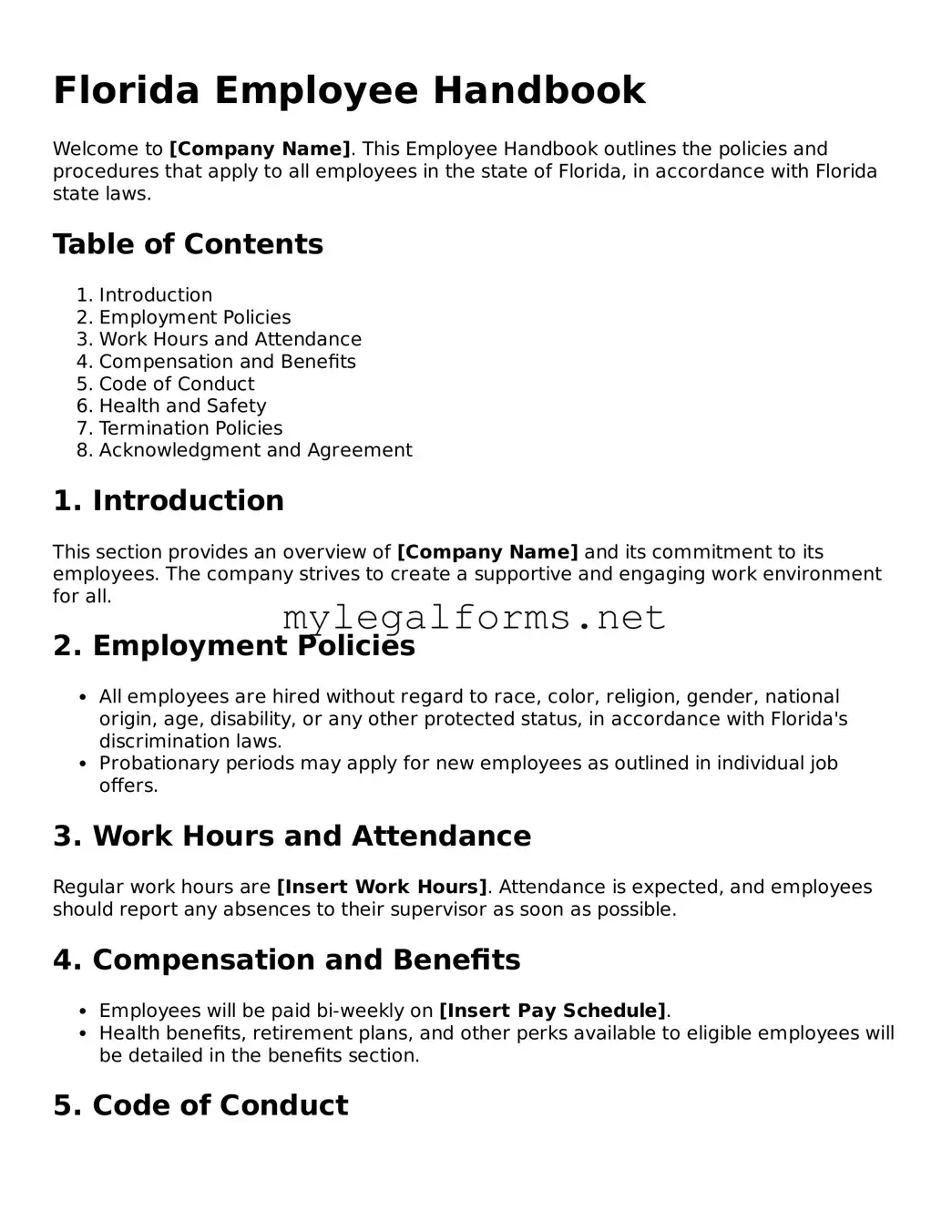Florida Employee Handbook
Welcome to [Company Name]. This Employee Handbook outlines the policies and procedures that apply to all employees in the state of Florida, in accordance with Florida state laws.
Table of Contents
- Introduction
- Employment Policies
- Work Hours and Attendance
- Compensation and Benefits
- Code of Conduct
- Health and Safety
- Termination Policies
- Acknowledgment and Agreement
1. Introduction
This section provides an overview of [Company Name] and its commitment to its employees. The company strives to create a supportive and engaging work environment for all.
2. Employment Policies
- All employees are hired without regard to race, color, religion, gender, national origin, age, disability, or any other protected status, in accordance with Florida's discrimination laws.
- Probationary periods may apply for new employees as outlined in individual job offers.
3. Work Hours and Attendance
Regular work hours are [Insert Work Hours]. Attendance is expected, and employees should report any absences to their supervisor as soon as possible.
4. Compensation and Benefits
- Employees will be paid bi-weekly on [Insert Pay Schedule].
- Health benefits, retirement plans, and other perks available to eligible employees will be detailed in the benefits section.
5. Code of Conduct
Employees are expected to conduct themselves professionally. Respectful communication and teamwork are crucial to maintaining a positive workplace.
6. Health and Safety
- All employees must adhere to workplace safety guidelines and report any hazards immediately.
- Emergency procedures and contacts will be provided during orientation.
7. Termination Policies
Termination may occur for various reasons, including but not limited to employee misconduct or performance issues. Both the company and employees must follow the termination procedures as outlined in this handbook.
8. Acknowledgment and Agreement
Employees must sign an acknowledgment form indicating that they have received, read, and understood this Employee Handbook.
